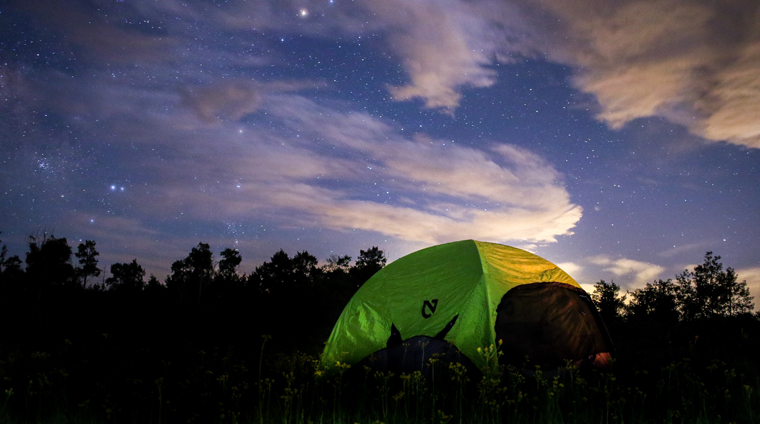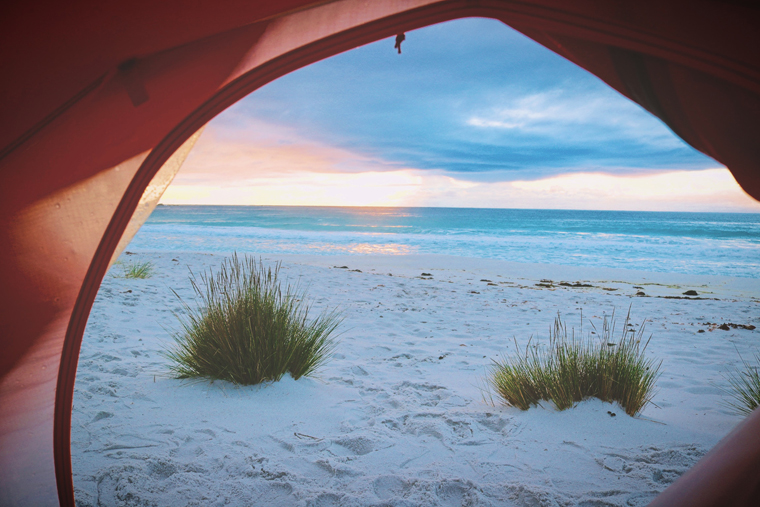These hacks that will transform your camping trip
/
Camp /
02 Sep 2016
Our top tips and hacks to make your next camping trip the best (and most stress-free) it can possibly be
Before you go
- Make a list of camping essentials, laminate it and keep it in the same bag as your tent. Then just check against it before you head off on your next camping trip. Same goes for any tent or stove instructions.
- Make a shower lanyard using nylon webbing, a couple of D-rings and key rings. These’ll keep your toiletries neatly together for
those early morning trips to the shower block. - Practise putting your tent up in your back garden, especially if it’s new or you haven’t used it in a while. This’ll also give it a chance to air after being stuffed away in the garage, and for you to see if there’s anything missing.
- Pack extra tent pegs. We’ve yet to set up camp without bending at least one out of shape. A camping mallet and peg puller is also handy.
- If your tent doesn’t already have them, invest in some reflective guy lines. These will save your ankles during late-night toilet visits.
- Put loo roll and hand sanitiser in a Ziploc bag so you can grab and go when nature calls.
- Wrap duck tape around your water bottle or torch in case you need it for any emergency repairs on site.
- For longer camping trips, pack your clothes in a shoe organiser (split by day or by item); it will save you rummaging around in your rucksack for a clean pair of socks on a chilly morning.
- Same goes for kitchen gear; a shoe organiser makes a brilliant camp kitchen larder for all your cutlery, utensils, spices, cloths and other essentials.

Get pitching
- If you’re car camping, bring along a cheap, supermarket pop-up tent and put it up first, then chuck all the tent pegs, flysheets and covers from your main tent in there while you construct it. Once you’re all set up, use the cheap tent as a store for muddy boots and clothes.
- Before you commit to a camping spot, lie down on the ground to check for bumps, roots and slopes.
- Clear the spot of stones, sticks and debris that could damage your tent (and give you a terrible night’s sleep).
- In blustery weather, pitch your tent with its smaller end directly into the wind. Keep the door away from the wind otherwise you’ll be in for draughty time!
- Don’t pitch your tent underneath the branches of a tree. If it rains during the day, the dripping will continue long after the rain passes… torture when you’re trying to sleep!
- Ensure the fly sheet is pitched taut enough so that it doesn’t touch the inner; this is essential to prevent condensation and rain penetrating the inner skin.
- If you have a porch, cover exposed ground with a ground sheet or waterproof jacket to minimise condensation.
- Once your tent is pitched, put your tent bag in the inside pocket of the tent, along with any pitching instructions. Otherwise it’s guaranteed to elude you when it’s time to pack up.
- If it’s windy, do a last round of tensioning the guylines before going to bed.

At the campsite
- Forgot your lamp? Attach a headlamp to a large bottle of water (with the light facing inwards). The water will disperse the light, creating a makeshift lantern.
- Stuff your sleeping bag sack with a down jacket for a comfortable makeshift pillow
- During the day, store your sleeping bag in a dry bag to protect it against leaks. At night you can store electronics in there instead to keep them safe from moisture or unexpected flooding.
- Chilly evening ahead? Boil some water, pour it into a flask and pop it into your sleeping bag to take the nip out (a good slurp of whisky also works well!).
